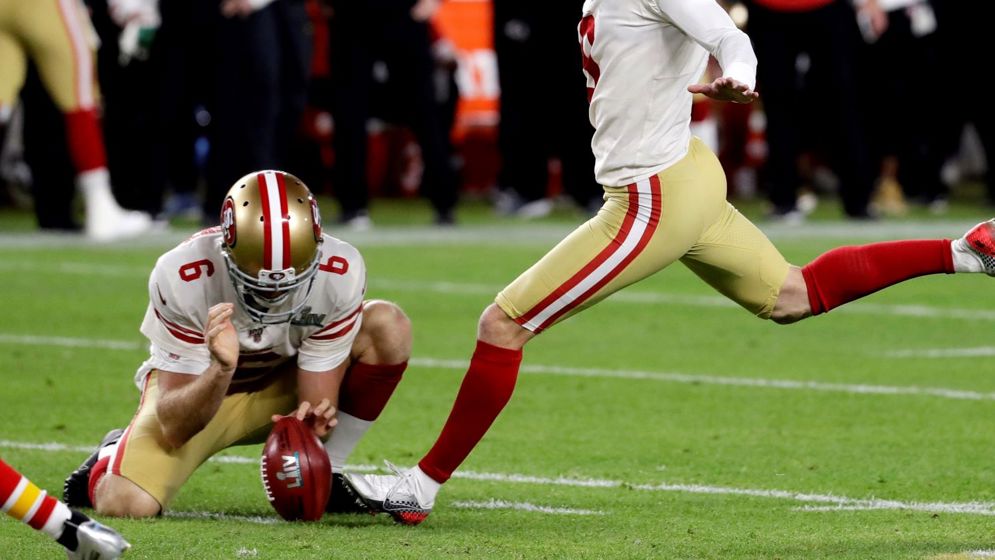The Extra Point Field Goal Success Probabilities by Direction
July 16, 2020

Down one point with 10 seconds remaining in an NFC Wild Card game against the Philadelphia Eagles, the Chicago Bears’ Cody Parkey attempted a 43-yard field goal. Parkey’s kick, eventually ruled to be partially blocked, deflected off the left upright then the crossbar, before falling into the end zone for a miss.
A deeper look shows that the so-called “Double Doink” was more difficult than a typical 43 yarder. Parkey not only was kicking in a game-winning scenario in the playoffs in January in Chicago, but he also was kicking north in Chicago — one of the most difficult kicking directions in the NFL.
Since 2000, kickers in Soldier Field have made 63.2% of 40-50-yard field goal attempts when kicking north, the lowest of any stadium/direction combination in the league. But don’t blame poor field goal kicking — when kicking south, kickers in Soldier Field have connected on 77.6% of attempts from that same distance, which is roughly the league average.
Turns out, there are six NFL stadiums where it’s notably more difficult to kick towards one end zone than the other.
In addition to Soldier Field, kickers have an easier time facing south at Arrowhead Stadium in Kansas City and Gillette Stadium in New England. Alternatively, kickers at the former home of the Raiders (Oakland Coliseum), Heinz Field in Pittsburgh and Raymond James Stadium in Tampa Bay kick better when facing north.
The following chart shows estimated success rates for field goal attempts between 40-60 yards at each of those six stadiums, separated based on kicker direction. Lines for kickers facing north are shown in red, while kickers facing south are shown in blue.

For Parkey, his 43-yard field goal attempt kicking towards the north end zone of Soldier Field yields roughly the same chance of success as a 49-yard field goal towards the south end zone.
Digging deeper within each stadium provides evidence for why some of these differences exist.
Soldier Field lies near Lake Michigan, which is known for unpredictable wind. The direction of the Soldier Field wind tends to point south about twice as often (67%) as it points north.
Arrowhead Stadium is symmetrical, but both ends of the stadium are relatively open. The stadium sees south-facing winds about 62% of the time, making it more difficult to make field goals when kicking to the north. This potentially affects extra points, too — kickers facing south at Arrowhead have hit 98% of extra point attempts since 2015, compared to 92% of north-facing attempts.
Gillette Stadium features a distinctive lighthouse in the open, north end zone, making conditions more difficult when compared to kicking into the closed end zone to the south. After a December 2018 game against the Buffalo Bills, Patriots coach Bill Belichick cited the open, lighthouse end of the stadium as a reason that he kept his offense on the field for a fourth-down attempt. Kickoffs are also impacted. Since 2011, when the NFL moved the kickoff to the 35-yard line, 48% of kickoffs to the south end zone at Gillette Stadium have gone for a touchback, compared to 40% to the north.
Heinz Field in Pittsburgh, like New England, has an open end zone to the south. The open end faces the Allegheny River, and on field goals of 40 yards or longer in this direction, Heinz Field kickers have hit just 57%, compared to 75% when facing north.
Raymond James Stadium in Tampa features winds that more often than not blow north, leading to more successful field goal attempts in that direction. South-facing field goals of 50 yards or fewer have been successful 80% of the time, compared to 88% when kickers faced north. Gusts out of the south were so strong before a 2018 game that the netting behind the end zone got tangled up with the uprights.
Oakland Coliseum, the former home of the Raiders, is more of an enigma. Since 2003, field goal attempts facing south have been 6.7% less likely to go in when compared to the north — the largest difference in the league. The Coliseum is symmetrical, and the winds disproportionately point west (83% of games), so there is no clear advantage from the wind or a closed end of the stadium. The Coliseum was also home to baseball’s Oakland Athletics — throw in the A’s dirt infield, and kickers faced a variety of conditions that could have affected kicking.
Are coaches aware of these differences?
Assessing if team behavior changes based on kick direction is not straightforward, but the average field goal distance in each direction may be telling. For example, If worries about kicking north in Chicago impacted coaching decisions, perhaps the average field goal distance for north-facing attempts would be lower.
We checked the average field goal distance when kicking north or south in all current and former stadiums, and none of the six examples above ranked in the top-15 in terms of differences. In fact, New England and Pittsburgh both had the two smallest differences in the league — less than 0.05 yards for an average distance between north and south end zones.
If coaches have picked up on the different trends, it does not appear to be showing in terms of average distance.